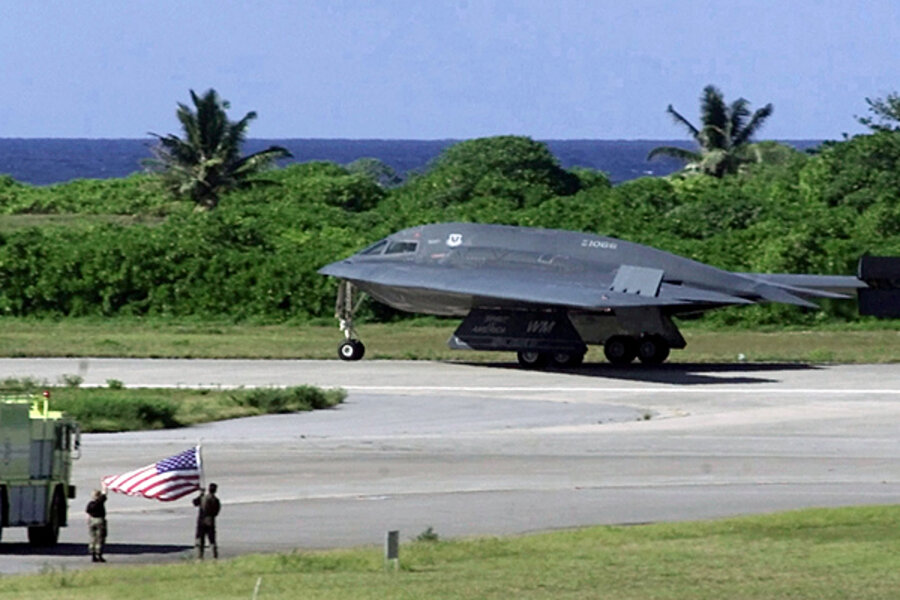US stealth bomber as messenger: what it says to China, North Korea
Loading...
| Washington
The Pentagon sent its distinctive bat-wing-shaped B-2 stealth bombers flying low over the Korean Peninsula this week – dropping munitions over a remote South Korean island – in what US military officials initially described as a routine training exercise.
But the B-2 bomber runs – along with the US military’s unusually frank announcement of this fact – were designed to send a far more pointed warning to North Korea, and more precisely to the country’s young dictator, Kim Jong-un, who lately has been increasingly bellicose in his words and actions, say senior US officials.
Mr. Kim’s “provocative actions” and “belligerent tone” have “ratcheted up the danger, and I think we have to understand that reality,” Defense Secretary Chuck Hagel said Thursday afternoon in his first joint press conference with the chairman of the Joint Chiefs of Staff, Gen. Martin Dempsey.
This danger includes the nation’s third nuclear test in February and threats to aim long-range artillery and rockets at US and allied troops.
The B-2 bomber can fly some 6,500 miles, drop smart bombs, and is nuclear-capable.
It is also the same US aircraft that infamously hit the Chinese Embassy in Belgrade, Yugoslavia, in 1999.
While this was described as an accident at the time, conventional wisdom among many defense analysts today is that China’s People's Liberation Army forces in the embassy basement were sending out intelligence information to President Slobodan Milosevic of Yugoslavia, whose military was committing atrocities.
The B-2 bomber does, after all, have the most precisely targeted munitions in any military arsenal, accurate to within two meters, the defense analysts point out.
Yet regardless of whether this theory about the 1999 B-2 bombing is true, the point is that the Chinese and North Korean governments believe it to be true, says Patrick Cronin, senior director of the Asia-Pacific Security Program at the Center for a New American Security.
For that reason, the training run involving the B-2 bombers “is a subtle signal to China and North Korea to say ‘Look, war can really happen. We’re not going to be deterred, and we’re going to go after high-value target sites.’ ”
But does the United States know enough about Kim’s rationality to bring out the B-2 bombers, which could further provoke North Korea?
“There are a lot of unknowns here,” Mr. Hagel conceded Thursday. “But we have to take seriously every provocative, bellicose word and action that this new young leader has taken so far since he’s come to power.”
Given those unknowns, then, is it wise to eye-poke an unpredictable – possibly irrational – new dictator?
“I don’t think we’re poking,” Hagel said. “I don’t think we’re doing anything extraordinary, or provocative, or out of the orbit of what other nations do to protect their own interests.”
The point, both Dempsey and Hagel reiterated, is not just to flex US military muscles for North Korea’s benefit, bu,t more important, to reassure US allies that the Pentagon has their back.
“The reaction to the B-2 that we’re most concerned about is not necessarily the reaction that it might elicit in North Korea,” Dempsey said Thursday. “Those exercises are mostly to assure our allies that they can count on us to be prepared.”







